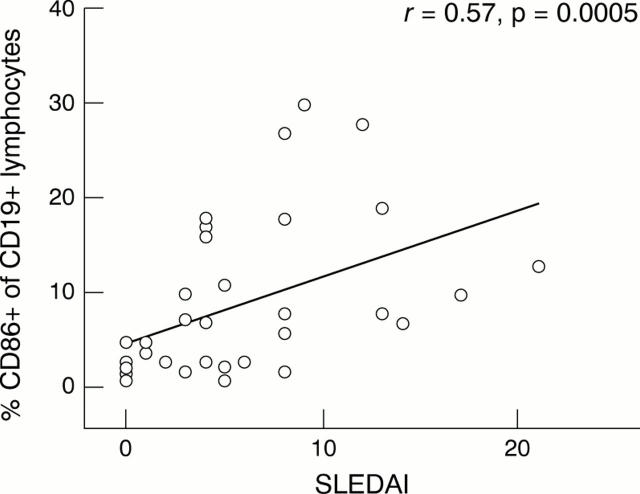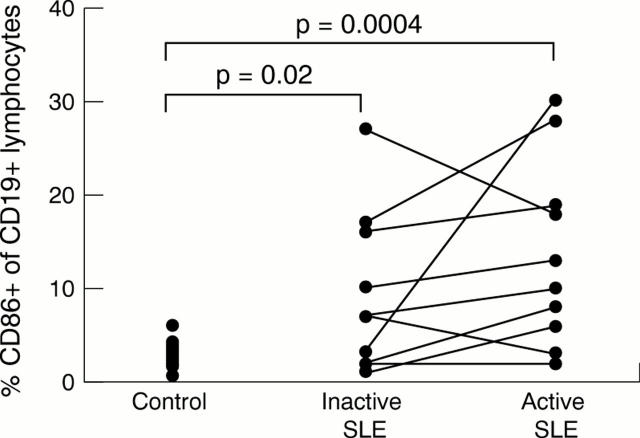Abstract
OBJECTIVE—In systemic lupus erythematosus (SLE) autoantibody production is T cell dependent. For a proper T and B cell interaction, signalling of costimulatory molecules on these cells is necessary. The expression of costimulatory molecules on peripheral blood lymphocytes in patients with SLE in conjunction with disease activity was measured to evaluate whether expression of costimulatory molecules in SLE is increased. METHODS—Thirteen patients with SLE with active disease, 10 patients with inactive disease, and 14 controls entered the study. In addition, samples from 10 of the 13 patients with active disease could be studied at a moment of inactive disease as well. Isolated peripheral blood lymphocytes were stained for the lymphocyte subset markers CD4, CD8, CD19, their respective activation markers CD25, HLA-DR, CD38, and the costimulatory molecules CD40L, CD28, CD40, CD80, and CD86. Expression was measured by flow cytometry. RESULTS—Peripheral blood lymphocytes of patients with SLE showed signs of increased activation at the moment of active disease. Almost all CD4+ T cells expressed CD28, both in patients and in controls. CD80 expression on CD19+ B cells was low in both groups and did not correlate with disease activity. In contrast, the percentage of CD19+ B cells expressing CD86 was increased in patients with SLE even in patients with inactive disease (p=0.04) and correlated with the SLEDAI score (p=0.0005) and levels of anti-dsDNA (p=0.006). No changes in CD40 or CD40L expression were found in the patients with SLE. CONCLUSION—In patients with SLE the expression of CD86 on CD19+ B cells is increased and is associated with disease activity, B cell activation, and levels of anti-dsDNA. The increased CD86 expression will render (autoreactive) B cells more susceptible for T cells. This can facilitate autoantibody production and might be a target for immunosuppressive treatments.
Full Text
The Full Text of this article is available as a PDF (106.6 KB).
Figure 1 .
Correlation between the percentage of CD86 expressing B (CD19+) cells and disease activity as measured by the SLEDAI score analysed for all samples taken (n=33).
Figure 2 .
Changes in CD86 expression in paired observations (n=10) of patients measured at the moment of active and inactive disease, respectively. Results for CD86 expression on B cells of controls (n=13) are also shown.




